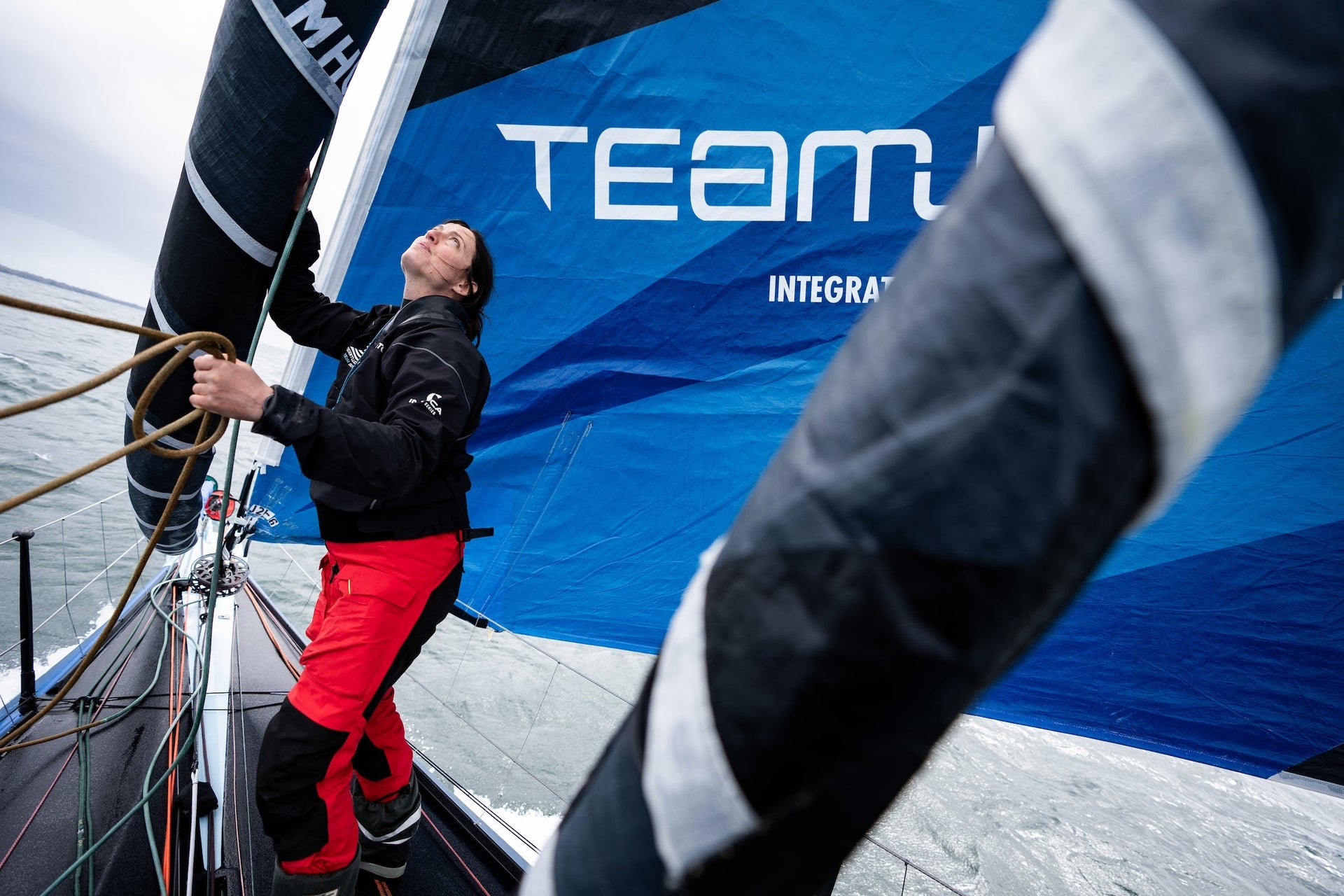FLYING SCOT SUMMER TIPS
GET READY FOR SUMMER SAILING
Few tips from our Flying Scot experts Zeke and Brian

If you are like most of us getting into the swing of things at the beginning of the summer sailing, season gets very exciting though, sometimes, we can forget some very basic things that make sailing and racing the Flying Scot fun. Here are five “reminder” tips from Zeke and Brian to refresh your memory on things that may easily be overlooked.
GET THE RIGHT HALYARD TENSION
MAINSAIL HALYARD – It is very common to see many teams sailing with incorrect main halyard tension. Generally we see the sail is not hoisted high enough. This causes the boom to “droop” and creates a bad sheeting angle. Even being as little as 3/4″ too low can make a big difference. Next time out try to hoist the main until the luff goes smooth then lower it one or two clicks until some wrinkles appear. This is a good starting point and a way to make sure you hoist high enough.
JIB HALYARD – Jib halyard tension, like the main, can be tricky. We don’t like to see “scallops” (or gaps between the snaps) with our jibs. However, we do want to see some “crow’s feet” on the bottom 2 or 3 snaps. “Crow’s feet” are small wrinkles that go into the sail about 2″ at the snaps and, if we have them at the bottom 3 snaps, it tells me the halyard isn’t too tight or too loose. If, when sailing, we see the sail sagging between the snaps, we need more halyard. If the sail is smooth all the way up the luff, it may be a click too tight. Note: As sails age it is better to be a click too tight than too loose on both halyards.
CREW WEIGHT POSITIONING
Crew weight positioning is critical in the Scot. We work to keep our crew weight close together and centered. This helps keep the boat balanced and on it’s designed lines. As the wind increases we move aft to keep the bow “knuckle” just out of the water or “kissing” the waves.
Also, it is very important to keep the big bow out of the water while sailing downwind. As soon as the wind is over about 6 knots, the skipper should sit all the way at the back of the bench. The crew should never be more than a body width forward of the main sheet block. As the breeze picks up, the crew should keep scooting back until they are all the way back against the skipper in over 15 knots.
MARK YOUR SHEETS AND HALYARDS!
Sailing fast consistently requires being able to repeat past successes so we have marks on our halyards and sheets. Some folks even mark the vang, centerboard and cunningham. The important thing is to find what makes you go fast and be able to repeat it the next time conditions are identical.
PLAY WITH YOUR CENTERBOARD HEIGHT GOING DOWNWIND
The boat reacts very sensitively to board height downwind. You want to have the board as far out of the water as you can to reduce drag. Proper board height helps the boat track straight and fast. If the helm is telling you the boat wants to head up, try pulling the board up another couple of inches until the helm goes neutral. Conversely, if the helm is telling you the boat wants to head down, try letting the board down a couple of inches.
DON’T BE AFRAID OF THE VANG!
Remember that the only really effective way to de-power your Flying Scot is to pull the vang on HARD! The more over-powered you get, the more vang you pull on so that you can ease the main sheet. In fully over-powered breeze strengths, the vang should be on so hard that the boom has a visual bend in it and the main sheet can be eased so that the boom is all the way past the corner of the transom. Just remember to ease the vang when you get to the weather mark!
These tips were provided by the North Sails Flying Scot experts Zeke Horowitz and Brian Hayes. Feel free to contact them if you have any questions or need any assistance. We want to help you make your Flying Scot fly so you can exceed your expectations and GO BEYOND this summer!
Good sailing!























